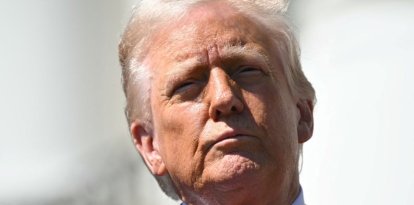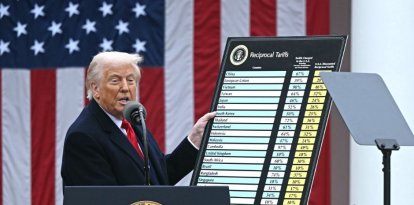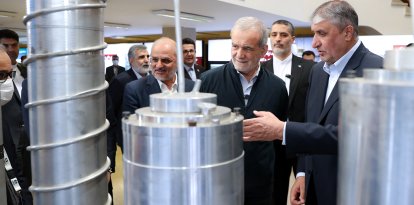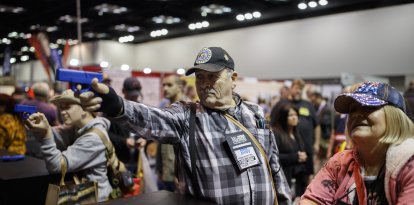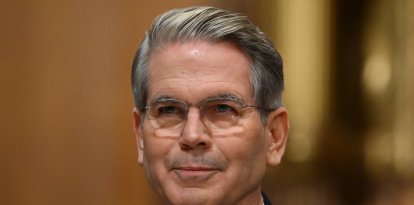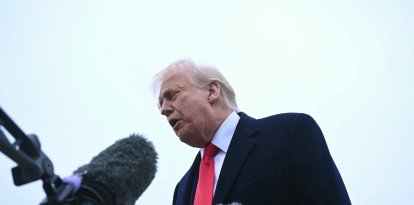Senate investigation concludes Secret Service failures contributed to Trump assassination attempt
The document outlined that the agency failed to clearly define planning and security responsibilities at the July 13 event.
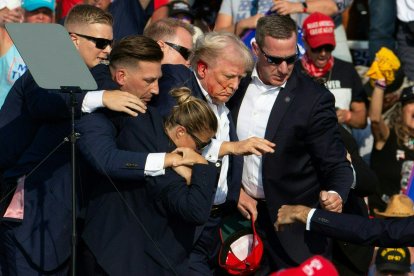
Former President Donald Trump is escorted by the Secret Service.
The Committee on Homeland Security and Governmental Affairs released a report that revealed that Secret Service (USSS) failures contributed to the attempted assassination of former President Donald Trump.
The bipartisan report includes key findings and recommendations to address those failures and ensure that the Secret Service can effectively carry out its protective mission.
The report detailed that the Secret Service did not clearly define planning and security responsibilities for the July 13 event. It further explained that it failed to ensure that the AGR International building was effectively covered.
According to the report, the “USSS identified the AGR building as a concern due to the line-of-sight from the roof to the stage, but did not take steps to ensure sufficient security measures were in place. USSS knew that local snipers planned to set up inside the AGR building and USSS did not express objections or concerns about that placement.”
Similarly, the committee determined that Secret Service personnel, including the leader of the service's sniper team, did not enter the AGR building or climb onto the roof prior to the shooting. "One USSS counter sniper team, whose responsibility included scanning the area around the AGR building for threats, had an obstructed view of the AGR roof,” it highlighted.
The USSS failed to effectively coordinate with state and local law enforcement. According to the report, it failed to adequately consider state and local law enforcement operational plans. Communications at the July 13 event, it explained, were isolated and the USSS did not ensure it could share information with local law enforcement partners in real time.
The document also revealed that the Secret Service did not communicate information about the suspicious person to key personnel and did not take steps to ensure the safety of former President Donald Trump.
"At approximately 5:44 pm, USSS personnel were notified that local law enforcement observed a suspicious person with a rangefinder near the AGR building. By 5:52 pm, at least eight USSS personnel had been informed. Approximately two minutes before shots were fired, the USSS Security Room, located on the rally grounds, was told that there was an individual on the roof of the AGR building. Shortly before shots were fired, a USSS counter sniper observed local officers running towards the AGR building with guns drawn,” the report stated.
The committee said another irregularity was that the service's anti-drone system experienced technical problems that rendered it inoperable for hours.
"With no backup system, the USSS agent responsible for overseeing the C-UAS capabilities at the July 13 rally called a toll-free 888 tech support hotline ‘to start troubleshooting with the company,’ which took several hours. That agent had only three months of experience working with that equipment and lacked knowledge about it," the document said.

Politics
Ryan Routh is formally charged with attempted murder against Trump
Emmanuel Alejandro Rondón
It also learned that several Secret Service officers reported having experienced technical problems with their radios during the political event and told the committee that such problems are common in the agency.
"A USSS Hercules 1 counter sniper was offered a local radio on July 13 but said he did not have time to pick it up because he was occupied fixing technical problems with his USSS radio. In addition, at the Pittsburgh airport before the motorcade left for the rally, the USSS Special Agent in Charge (SAIC) of the Pittsburgh field office gave the Lead Agent his radio because the Lead Agent’s radio was not working,” the committee's report highlighted.
After learning of the findings, the committee made a series of recommendations to the Secret Service. It suggested that Congress require the Secret Service to identify defined roles and responsibilities for personnel responsible for advance planning for any protective event:
"For all protective events, USSS should improve coordination and specify roles and responsibilities between and among federal, state, and local law enforcement partners.”
In addition, it stressed that prior to each protection event, a single person should be designated responsible for approving all plans, including responsibility for approving security perimeters. It also recommended that the Department of Safety and Security and the Secret Service ensure that communication plans between federal, state and local law enforcement agencies and emergency services are properly coordinated.
"USSS should consider sending additional assets, including counter snipers, to all future outdoor protective events as it evaluates intelligence and threats against protectees. USSS should also ensure that the appropriate agents working protective events are informed of relevant intelligence and threats against protectees.”
RECOMMENDATION
